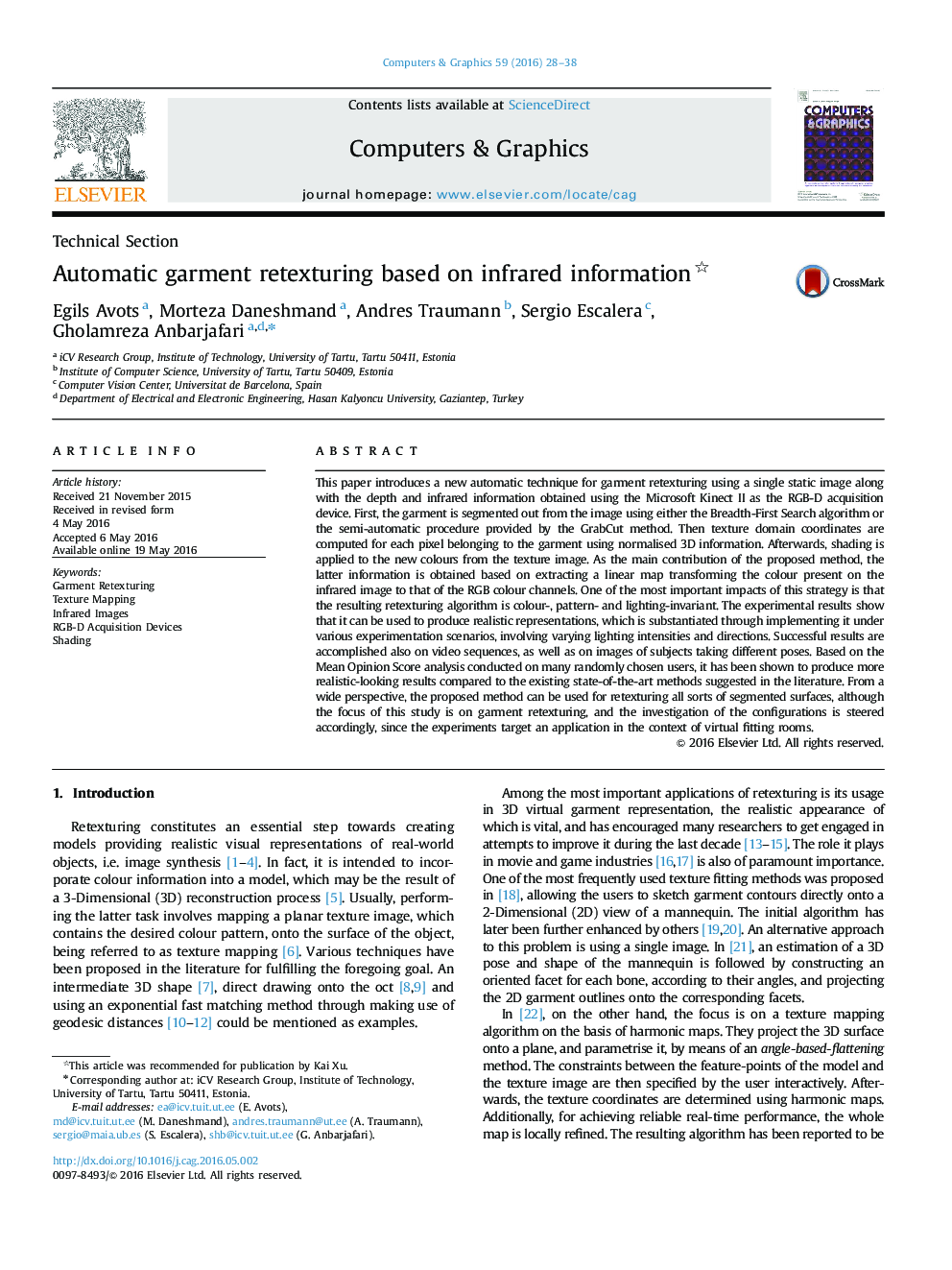| Article ID | Journal | Published Year | Pages | File Type |
|---|---|---|---|---|
| 441768 | Computers & Graphics | 2016 | 11 Pages |
•Despite state-of-the-art methods, ours does not depend on the brightness of surface.•Our method works for garments that already have texture on them.•We propose a completely color- and texture-invariant shading system.•The manual contribution from the user is minimized by our method.•Except for the minimal segmentation interaction, the proposed solution is automatic.
This paper introduces a new automatic technique for garment retexturing using a single static image along with the depth and infrared information obtained using the Microsoft Kinect II as the RGB-D acquisition device. First, the garment is segmented out from the image using either the Breadth-First Search algorithm or the semi-automatic procedure provided by the GrabCut method. Then texture domain coordinates are computed for each pixel belonging to the garment using normalised 3D information. Afterwards, shading is applied to the new colours from the texture image. As the main contribution of the proposed method, the latter information is obtained based on extracting a linear map transforming the colour present on the infrared image to that of the RGB colour channels. One of the most important impacts of this strategy is that the resulting retexturing algorithm is colour-, pattern- and lighting-invariant. The experimental results show that it can be used to produce realistic representations, which is substantiated through implementing it under various experimentation scenarios, involving varying lighting intensities and directions. Successful results are accomplished also on video sequences, as well as on images of subjects taking different poses. Based on the Mean Opinion Score analysis conducted on many randomly chosen users, it has been shown to produce more realistic-looking results compared to the existing state-of-the-art methods suggested in the literature. From a wide perspective, the proposed method can be used for retexturing all sorts of segmented surfaces, although the focus of this study is on garment retexturing, and the investigation of the configurations is steered accordingly, since the experiments target an application in the context of virtual fitting rooms.
Graphical abstractFigure optionsDownload full-size imageDownload high-quality image (74 K)Download as PowerPoint slide
